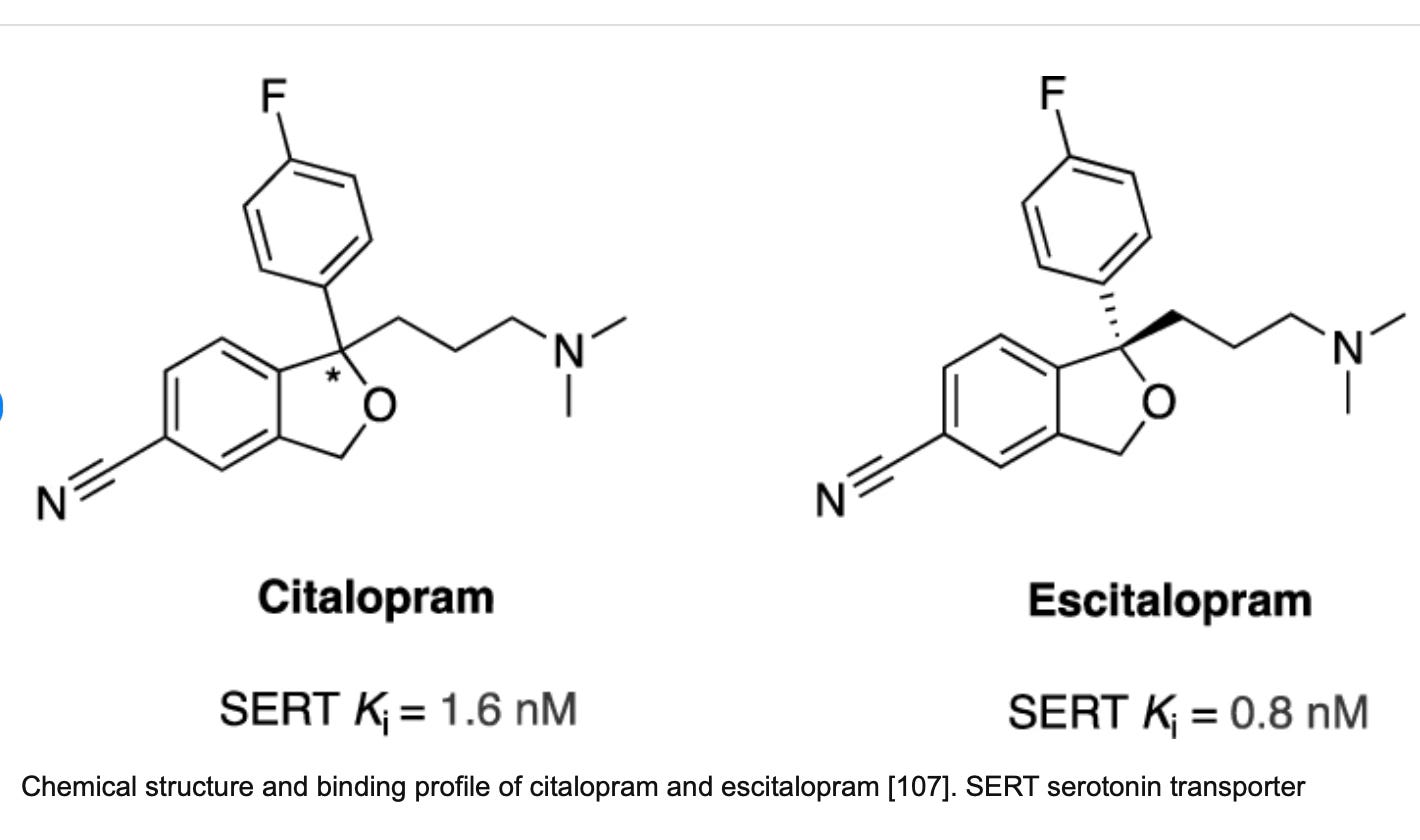Oh god. Not another SSRI. I promise you, there is something unexpected in this article. YES. Yes, precious, another one. Lexapro is the brand name for escitalopram, which is the “left-handed” enantiomer of the drug citalopram, a.k.a., Celexa. The FDA approved it on August 14, 2002. This is the classic “me too” antidepressant. It garnered the following indications subsequently:
Acute and Maintenance Treatment of Major Depressive Disorder (MDD) in adults and adolescents aged 12-17 years
Acute Treatment of Generalized Anxiety Disorder (GAD) in Adults.
What is special about Lexapro? It’s a much…smaller pill. Celexa, the mixture of the left and right-handed molecules of citalopram, is dosed in 10, 20, 30, and 40mg tablets. Lexapro? 5, 10, 20mg. It’s half the milligrams! That sounds like less medicine, which might not be important to you, but in a drug for anxious people, saying it’s as little as 5mg? That sounds less. Do you want to take 80 milligrams of Prozac? How about 200 mg of Zoloft? No? Sounds like too much. I know…what would you say to just 5 mg of Lexapro?
Exactly. It’s huge, in that it is so small. The escitalopram molecule has a stronger binding affinity than the citalopram molecule (which is a racemic mixture of left and right-handed molecules):
A brief personal aside—what is my favorite thing, after connecting with my fabulous readers, that comes from authoring this publication? It is how deep the wormhole of the unknown goes. For example, there has been a randomized controlled trial of generic vs. brand name Lexapro. Yes. That happened. Spoiler alert: there was no difference:




